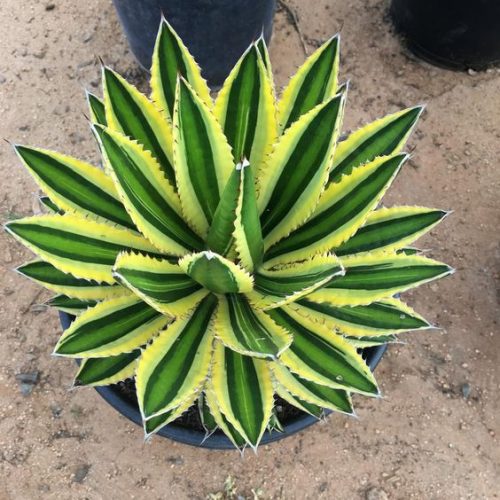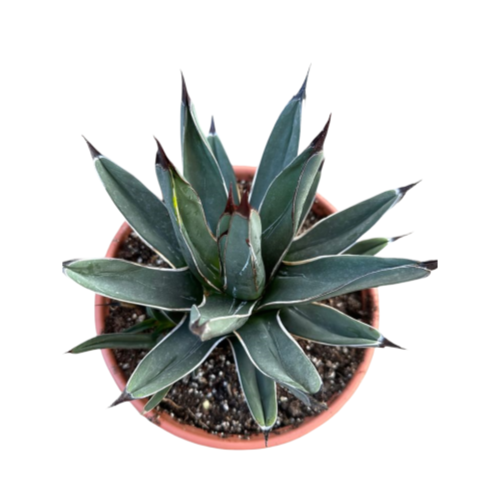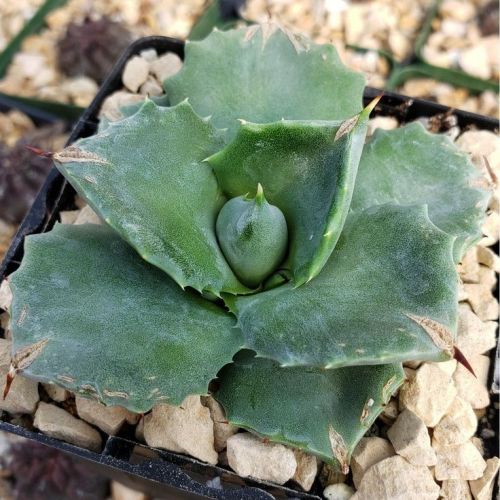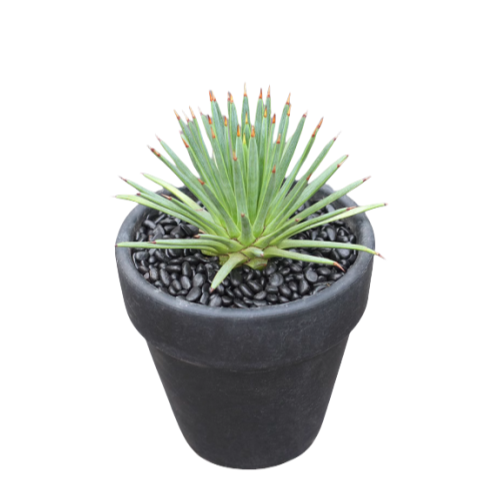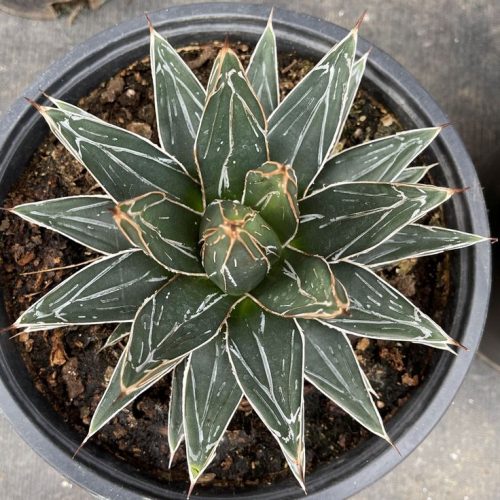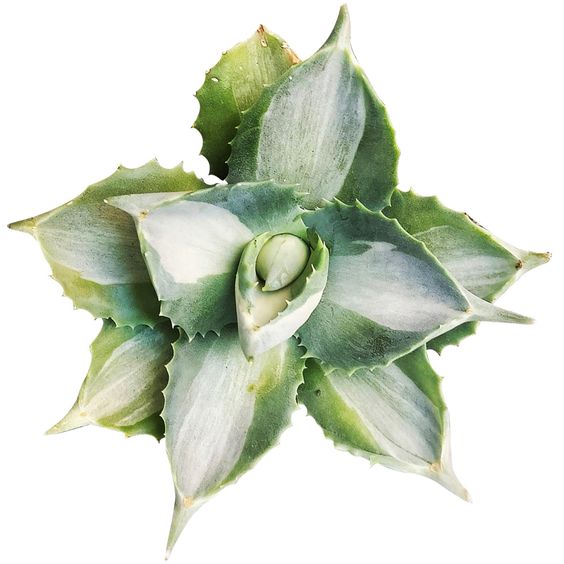Agave jọgburu
- Botanical Name: Agave jọgburu
- Family Name: Asparacaceae
- Ị ga: 1-3 Feet
- Okpomoku: −3.9 °C~10 °C
- Others: Likes sun, drought-resistant, needs good drainage.
Nlebazi anya
Nkọwa nke ngwaahịa
Agave horrida: The Regal Thorn – A Commanding Presence in Arid Kingdoms
The Prickly Parade: Agave horrida’s Green and Spiky Story
Agave jọgburu, onye so na Asparacaceae family (also known as Agavaceae), stands out with its medium-sized, symmetrical rosette. This plant’s leaves are a deep green, complemented by a dense array of sharp marginal spines and imposing terminal spines, creating a visually striking and somewhat fearsome presence.
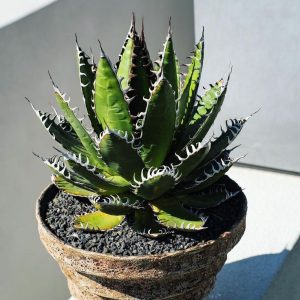
Agave jọgburu
Akwukwo ahihia lore
Kentozu Agave jọgburu plants are adorned with 80 to 100 leaves, each extending 18 to 35 centimeters in length and 4 to 7 centimeters in width at the base. These leaves contribute to the plant’s overall stature, which reaches heights of 30 to 60 centimeters and spans a rosette diameter of 45 to 90 centimeters.
Na-egbu egbu oge
Ndụ Ndụ Agave jọgburu culminates in a dramatic flowering event. The plant raises a towering flower stalk, reaching heights of 2 to 2.5 meters, before the entire rosette completes its vegetative journey with a spectacular finale. This blooming period is not just a botanical event but a natural spectacle that marks the end of the plant’s growth cycle.
Agave jọgburu: Leanel Dita
Ala ala
Ọ na-ehi ụra site n'obi Mexico, kpọmkwem na steeti Morolos, Querétaro, na San Luis Poosí. Ọ na-eme ka ịdị elu dị n'etiti 6,900 na 7,500 (2100 ruo mita), ebe ọ na-ahụ niche ya n'etiti slopes na lava ubi.
Ntachi obi
Agave horrida’s Climate Command” This species is less cold-hardy but more heat-tolerant, falling under USDA Hardiness Zone 9b, withstanding lows of -3.9°C. Its heat tolerance reaches Zone 11a, enduring highs of +7.2°C, showcasing its adaptability to a range of temperatures.
Na eze
Dị ka osisi na-ahụ n'anya, ọ na-amị mkpụrụ nke ọma n'okpuru ọnọdụ ndo, na-eru ike site na anyanwụ iji mee ka uto ya na-eto eto ma na-agba akwụkwọ ndụ.
Ala na igbapu
The Soil Supremacy” For optimal growth, it demands well-drained soils to prevent waterlogging, which can lead to root rot. Its preference for well-drained soil ensures that it can weather wet conditions without succumbing to water-related stress.
Ntachi Obi
Agave horrida’s Drought Defiance” As a succulent adapted to arid conditions, it exhibits remarkable drought tolerance. It thrives in environments with ample sunlight and well-draining soil, requiring minimal water to maintain its robust health and structure.
Kedu ka agagide ijeda ahụ siri ike
Anyanwụ nke anwụ na-eme nri
Agave horrida’s Summer Care” While it thrives in sunlight, it’s crucial to shield it from the harsh, direct rays of the summer sun, particularly for variegated cultivars that are more susceptible to leaf burn. During the active growing season from May to October, a balanced, slow-release fertilizer can be applied bi-monthly to support robust growth, but it’s essential to cease fertilization during the winter dormancy period.
Usoro ntụgharị uche: Nlekọta mgbọrọgwụ na ala ala
The Art of Transplanting Agave horrida” Transplanting it requires a delicate touch to preserve the integrity of its root system. It’s vital to plant the agave with its neck at the soil line, avoiding deep burial that can lead to rot and stunted growth. This careful positioning ensures the plant’s health and facilitates its acclimation to new environments.
Ihe omume gburugburu ebe obibi: na-echebe site na oke
Protecting Agave horrida from Harsh Conditions” it should be placed in a location that avoids direct exposure to air conditioning airflow and excessive rain, especially when planted in the ground. These environmental extremes can stress the plant and compromise its health. By providing a stable, sheltered environment, it can flourish with its natural resilience and beauty.





